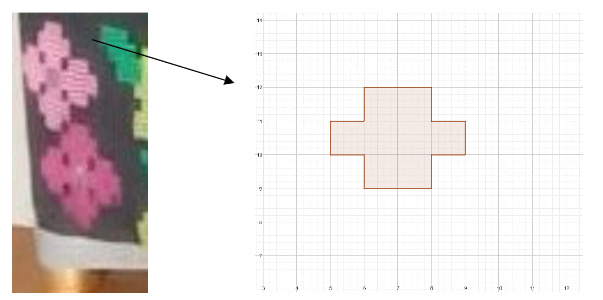Ethnomathematics: Learning Geometric Transformation Through the Formation of Lagosi Motif
DOI:
https://doi.org/10.23917/varidika.v36i2.5969Keywords:
Lagosi motifs, Wajo, Ethnomathematics, Geometry, WeavingAbstract
The Lagosi motif, a prominent design in the traditional fabric of the Wajo district, is well-known but increasingly rare among local weavers. This motif, drawing inspiration from natural elements such as flowers and stems, holds significant philosophical and cultural meaning for the Wajo people, serving as a key element of their endangered cultural heritage. Despite its cultural importance, the motif has been minimally explored in the context of ethnomathematics. Consequently, this study investigates the mathematical concepts inherent in the design of Lagosi motifs, aiming to utilize them as educational tools for students and to support cultural preservation efforts. Employing a qualitative research methodology with an ethnographic approach, data were collected through observations, interviews, and documentation. The validity and reliability of the data were ensured through triangulation and confirmability. The study reveals that geometric transformations, specifically translation and reflection, play a central role in the creation of Lagosi motifs. These findings highlight the natural emergence of mathematical concepts within local cultural practices, offering potential for their integration into contextualized mathematics education. Furthermore, the results aim to instill a sense of cultural pride in students, thereby contributing to the preservation of Wajo's cultural heritage. The study also underscores the opportunity to leverage Lagosi motifs as culturally relevant educational tools and to foster interdisciplinary collaboration between mathematics and cultural studies.
Downloads
References
Aras, A., Prahmana, R. C. I., Buhaerah, B., Busrah, Z., Jumaisa, J., & Setialaksana, W. (2023). Reflection learning innovation in the context of the lipa sabbe bunga caramming motif. Al-Jabar: Jurnal Pendidikan Matematika, 14(1), 85–97. https://doi.org/10.24042/ajpm.v14i1.15912
Barton, B. (1996). Ethnomathematics: Exploring cultural diversity in mathematics. Unpublished PhD Dissertation, The University of Auckland.
Busrah, Z., Aras, A., Buhaerah, B., & Pathuddin, H. (2023). Mathematical ability of Bugis community in designing Lipa’Sabbe of Sengkang. JRAMathEdu (Journal of Research and Advances in Mathematics Education), 8(1), 30–48. https://doi.org/10.23917/jramathedu.v8i1.2524
Bustan, A. W., Salmin, M., & Talib, T. (2021). Eksplorasi Etnomatematika Terhadap Transformasi Geometri Pada Batik Malefo. Jurnal Pendidikan Matematika (JUPITEK), 4(2), 87–94. https://doi.org/10.30598/jupitekvol4iss2pp87-94
Christanti, A. D. I., & Sari, F. Y. (2020). Etnomatematika Pada Batik Kawung Yogyakarta Dalam Transformasi Geometri. ProSANDIKA UNIKAL (Prosiding Seminar Nasional Pendidikan Matematika Universitas Pekalongan), 1, 435–444.
Clements, D. H., & Sarama, J. (2004). Geometric and spatial thinking in early childhood education. In Engaging young children in mathematics: Standards for early childhood mathematics education (pp. 267–297). Erlbaum.
De Abreu, G. (2020). Cultural diversity in mathematics education. Encyclopedia of Mathematics Education, 164–168. https://doi.org/10.1007/978-3-030-15789-0_37
Ditasona, C. (2018). Ethnomathematics exploration of the Toba community: Elements of geometry transformation contained in Gorga (ornament on Bataks house). IOP Conference Series: Materials Science and Engineering, 335(1), 12042.
Harwati, L. N. (2019). Ethnographic and case study approaches: Philosophical and methodological analysis. International Journal of Education and Literacy Studies, 7(2), 150–155. https://doi.org/10.7575/aiac.ijels.v.7n.2p.150
Hasibuan, H. A., & Hasanah, R. U. (2022). Etnomatematika: eksplorasi transformasi geometri ornamen interior balairung istana maimun sebagai sumber belajar matematika. Jurnal Cendekia: Jurnal Pendidikan Matematika, 6(2), 1614–1622. https://doi.org/10.31004/cendekia.v6i2.1371
Intan, D. H. (2021). Etnomatematika: Eksplorasi Transformasi Geometri Tenun Suku Sasak Sukarara. Jurnal Elemen, 7(2), 324–335. https://doi.org/10.29408/jel.v7i2.3251
Irvan, I. (2023). Ethnomathematics Exploration In Geometric Transformation Learning In Batak Woven Cloth. International Journal Reglement & Society (IJRS), 4(3), 248–253. https://doi.org/10.55357/ijrs.v4i3.427
Kusno, K., Yolanda, G., & Supiyati, S. (2024). Exploration of Unggan weaving in Minang culture: An ethnomathematics study. Jurnal Elemen, 10(1), 121–134. https://doi.org/10.29408/jel.v10i1.23950
Morita-Mullaney, T., Renn, J., & Chiu, M. M. (2021). Contesting math as the universal language: A longitudinal study of dual language bilingual education language allocation. International Multilingual Research Journal, 15(1), 43–60. https://doi.org/: 10.1080/19313152.2020.1753930
Owens, K. (2014). Diversifying our perspectives on mathematics about space and geometry: An ecocultural approach. International Journal of Science and Mathematics Education, 12, 941–974. https://doi.org/10.1007/s10763-013-9441-9
Pathuddin, H., & Mariani, A. (2023). Ethnomathematics of Pananrang: A guidance of traditional farming system of the Buginese community. Journal on Mathematics Education, 14(2), 207–224. https://doi.org/10.22342/jme.v14i2.pp205-224
Pathuddin, H., & Nawawi, M. I. (2021). Buginese Ethnomathematics: Barongko Cake Explorations as Mathematics Learning Resources. Journal on Mathematics Education, 12(2), 295–312. https://doi.org/10.22342/jme.12.2.12695.295-312
Pathuddin, H., & Raehana, S. (2019). Etnomatematika: Makanan Tradisional Bugis Sebagai Sumber Belajar Matematika. MaPan: Jurnal Matematika Dan Pembelajaran, 7(2), 307–327. https://doi.org/10.24252/mapan.2019v7n2a10
Prahmana, R. C. I., & D’Ambrosio, U. (n.d.). Learning geometry and values from patterns: Ethnomathematics on the batik patterns of yogyakarta, indonesia. Journal on Mathematics Education, 11(3), 439–456. https://doi.org/10.22342/jme.11.3.12949.439-456
Reksaningrum, M., & Muljani, S. (2022). Pembelajaran Berkarakteristik Pembelajaran Inovatif Abad 21 pada Materi Transformasi Geometri dengan Model Pembelajaran discovery Learning di SMK Bina Nusa Slawi Kabupaten Tegal. Cakrawala: Jurnal Pendidikan, Special Issue: Pedagogy in Indonesia, 131–139. https://doi.org/10.24905/cakrawala.vi0.175
Rozi, M. F., & Budiarto, M. T. (2022). Literasi Matematis Berbasis Budaya Jombangan Dalam Perspektif Etnomatematika. MATHEdunesa, 11(1), 58–69. https://doi.org/10.26740/mathedunesa.v11n1.p58-69
Siddiq, M., & Salama, H. (2019). Etnografi Sebagai Teori dan Metode. Kordinat: Jurnal Komunikasi Antar Perguruan Tinggi Agama Islam, 18(1), 23–48. https://doi.org/10.15408/kordinat.v18i1.11471
Soebagyo, J., & Luthfiyyah, F. I. (2023). Ethnomathematics Exploration of The Great Mosque of Al-Barkah, Bekasi City, Through The Learning of Geometry and Transformational Geometry. Indonesian Journal of Science and Mathematics Education, 6(2), 152–164. https://doi.org/10.24042/ijsme.v5i1.17179
Sutera, P. K. T. (2024). Implementasi dan Pengaruh Marketing Mix sebagai Strategi Peningkatan. JEKPEND Jurnal Ekonomi Dan Pendidikan, 7(1), 100–107. https://doi.org/10.26858/jekpend.v7i1.54401
Turmuzi, M., Sudiarta, I. G. P., & Suharta, I. G. P. (2022). Systematic literature review: Etnomatematika kearifan lokal budaya Sasak. Jurnal Cendekia: Jurnal Pendidikan Matematika, 6(1), 397–413. https://doi.org/10.31004/cendekia.v6i1.1183
Winarno, K. (2015). Memahami Etnografi Ala Spradley. Jurnal SMART (Studi Masyarakat, Religi, Dan Tradisi), 1(2). https://doi.org/doi.org/10.18784/smart.v1i2.256

Downloads
Submitted
Accepted
Published
Issue
Section
License
Copyright (c) 2024 Hikmawati Pathuddin, Zulfiqar Busrah

This work is licensed under a Creative Commons Attribution 4.0 International License.












